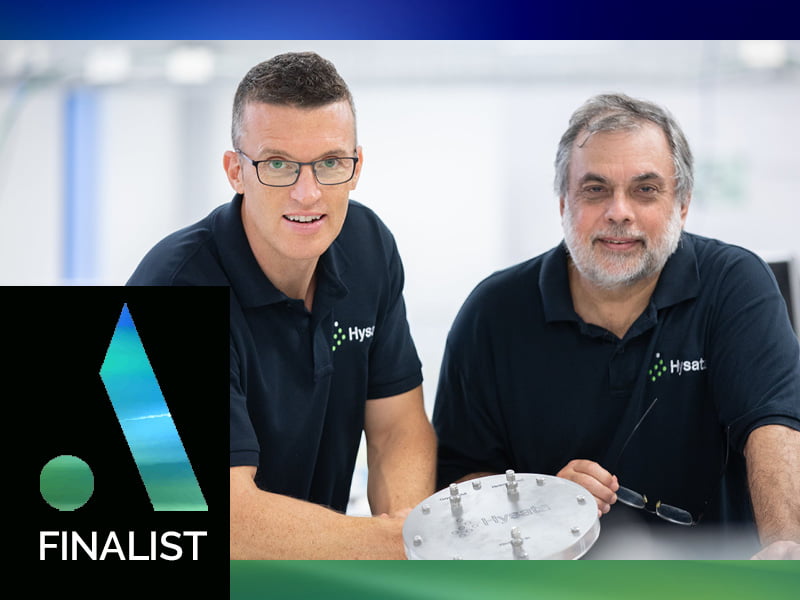While having the potential to greatly assist with the energy transition, green hydrogen production has only experienced incremental improvements over the last five decades.
Green hydrogen is expected to contribute 20 per cent of the total abatement required to reach net-zero by 2050, and is crucial in decarbonising sectors like steel, chemicals, high-grade heat and heavy transport.
New South Wales-based company Hysata believes it has found the step-change innovation that can deliver the world’s lowest cost green hydrogen and help with the journey to reaching net-zero emissions.

Green hydrogen involves the use of electrolysers to split water into hydrogen and oxygen. The current process is complex, costly, only moderately efficient and difficult to scale.
This process of splitting the water takes energy. If it was 100 per cent efficient, all of the energy would be going towards the splitting process.
But currently, a lot of energy is produced and the process is made less efficient by electrical resistance. Current green hydrogen methods are about 75 per cent efficient, and are about twice the cost of hydrogen produced from fossil fuels.
Hysata has developed a new type of electrolyser that is 95 percent efficient, up from the current offerings which are 75 per cent efficient, coupled with a simplified balance of plant.
The company also says that its offering can produce hydrogen for “well below” current rates and the competitive target price of $2 per kilogram.
The “capillary-fed” cell-based electrolyser system pioneered by Hysata claims to offer the world’s highest efficiency thanks to its cell-efficiency and simplicity.
Hysata is a finalist in the InnovationAus 2023 Awards for Excellence in the Energy and Renewables category. You can secure your tickets to the black-tie event here.
The concept for Hysata was formulated by Professor Gerry Swiegers at the University of Wollongong, and was spun out with the company established to commercialise it.
The company has since landed $20.9 million in funding from ARENA as part of its $47.5 million project to build and test a 5 megawatt system at its 8000 square metre Port Kembla manufacturing facility.
Hysata then plans to move the whole system to Rockhampton in Queensland for installation and trials next to the Stanwell Power Station.
Queensland-government owned power company Stanwell Corp has provided the site and facilities, and $3 million in funding for the project.
Hysata also landed $5 million in seed funding from IP Group and the Clean Energy Finance Corporation in mid-2021, and closed a Series A round of $42.5 million last year.
Professor Swiegers was also awarded the Industry Laureate Fellowship 2023. Former Australian Chief Scientist Dr Alan Finkel has been appointed to serve on Hysata’s Global Advisory Board.
The InnovationAus 2023 Awards for Excellence are proudly supported by Investment NSW, AusIndustry, Australian Computer Society, Technology Council of Australia, Agile Digital, CSIRO, TechnologyOne, IP Australia, METS Ignited and Q-CTRL. You can book your seat – or book a table – for these awards right here.
The finalists for the all of the InnovationAus Awards for Excellence are an incredible set of companies. Have your say in which of these innovators becomes the People’s Choice.
Protecting your great ideas with intellectual property (IP) rights can lead to lasting benefits for your growing business. IP refers to creations of the mind, such as a brand, logo, invention, design or artistic work. Head to the IP Australia website to find out more about IP, and how it might help your business.
Do you know more? Contact James Riley via Email.
